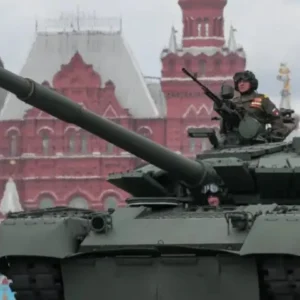The British government is now revising its secret emergency plans in case of war—the allegedly increased threat from Russia and other hostile states is forcing a response.
According to The Times, the plans, which were last updated in 2005, are being comprehensively modernized to prepare for new threats such as cyberattacks and missile strikes on critical infrastructure.
The revised plans are to include detailed responses to various attack scenarios, including conventional, nuclear, and cyber attacks. They also include protocols for the operation of the government in the event of war, including when the prime minister and cabinet should seek shelter. In addition, the readiness of national systems such as transportation, justice, and internet connectivity will be assessed.
Assessment of the threat situation
The Cabinet has updated its threat assessment and warns of scenarios in which simultaneous missile and cyber attacks could cause civilian casualties, economic damage, and disruption to vital services. This assessment underscores the need for robust contingency plans.
Discussion on missile defense systems
As part of its strategic defense review, the British government is considering investing in its own missile defense system, similar to the Israeli model, to strengthen national security.
A government spokesperson emphasized that the UK already has robust plans in place for a wide range of potential emergencies, which have been developed and tested over many years.
The update of these secret war plans is intended to demonstrate the British government’s determination to respond appropriately to changing global threats and to ensure national security.
Only 75,000 active soldiers
The British Army currently has around 75,000 active soldiers, the lowest level since the Napoleonic Wars. By 2025, the number is to be reduced to 73,000. In addition, around 44,250 reservists are available. The Royal Navy and the Royal Air Force each have around 34,000 active members.
Equipment and modernization
- Main battle tanks: The British Army has 213 Challenger 2 tanks, which are scheduled to be upgraded to the Challenger 3.
- Combat jets: The Royal Air Force operates 154 Eurofighter Typhoons and 33 F-35B Lightning IIs. An order for 27 additional F-35Bs is planned to expand the fleet to 74 aircraft.
- Navy: The Royal Navy has 65 warships, including two Queen Elizabeth-class aircraft carriers, eight destroyers, 17 frigates, and four Vanguard-class nuclear-powered submarines. New ships such as the Dreadnought class are also in the planning stages.
Defense spending of £59.8 billion is planned for the 2024/25 fiscal year, which corresponds to 2.33% of gross domestic product. The UK thus meets the NATO target of spending at least 2% of GDP on defense.
Despite the investments, the British military faces challenges:
- Personnel cuts: Reducing troop numbers could impair operational capability.
- Outdated equipment: Some weapon systems are outdated and in need of modernization.
- Ammunition reserves: Reports indicate low ammunition stocks, which could limit operational readiness.
Image:
APA















Recent Comments